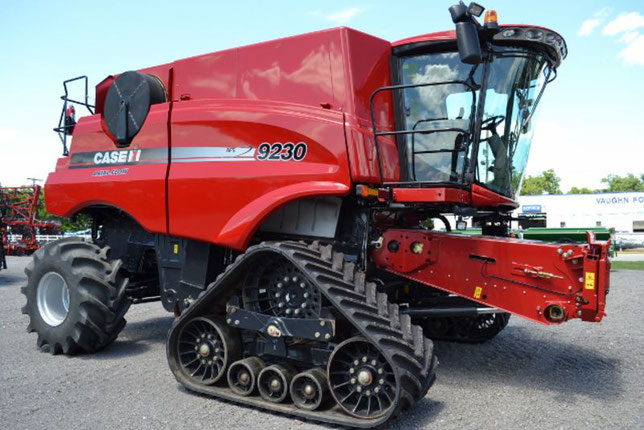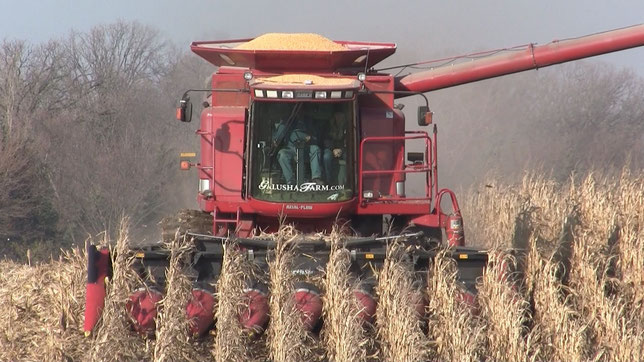How To Repair A Tire Big On Big Truck

![]()
Example MX/TG Fault codes list
Instance MX/TG Fault codes
Case MX_TG Error codes.pdf
Adobe Acrobat Certificate 168.7 KB
![]()
Case 2388 Parts Catalog [PDF, ENG, 12.6 MB]
Case 2388 Parts Catalog [PDF, ENG, 12.6
Adobe Acrobat Document 12.three MB
![]()
Case AFX8010 Repair Manuals PDF [PDF, ENG, 36.8 MB]
Case AFX8010 Repair Manuals PDF [PDF, EN
Adobe Acrobat Document 36.0 MB
![]()
CASE IH 1190 Store Manual [PDF, ENG, 32.2 MB]
CASE IH 1190 Shop Manual [PDF, ENG, 32.2
Adobe Acrobat Document 31.5 MB
![]()
Example 9370, 9380, 9390 Parts Catalog [PDF, ENG, 7.2 MB]
CAse 9370, 9380, 9390 Parts Itemize [PDF
Adobe Acrobat Certificate vii.0 MB
![]()
Case Combine 2388 (2006) Parts Itemize [PDF, RUS, 12 MB]
Case Combine 2388 (2006) Parts Catalog [
Adobe Acrobat Document 11.8 MB
![]()
Case IH 2388 User Manual [PDF, ENG, 1.6 MB]
Instance IH 2388 User Manual [PDF, ENG, 1.6
Adobe Acrobat Document 1.vi MB
![]()
Instance IH AFX-8010 Service Transmission [PDF, ENG, 36.8 MB]
Instance IH AFX-8010 Service Manual [PDF, EN
Adobe Acrobat Document 36.0 MB
![]()
Instance IH Parts Catalogue [PDF, ENG, three.9 MB]
CASE IH Parts Catalogue [PDF, ENG, three.9 M
Adobe Acrobat Certificate 3.nine MB
![]()
Case IH U115 (Farmall 95U Pro EPFarmall 105U Pro EPFarmall 115U Pro EP) Service Manual [PDF, ENG, 62 MB]
Instance IH U115 (Farmall 95U Pro EPFarmall
Adobe Acrobat Document 61.2 MB
![]()
CASE IH Motor Truck CTS xi & 12 service_manual [PDF, ENG, 27.ix MB]
CASE IH Motor Truck CTS eleven & 12 service_
Adobe Acrobat Certificate 27.2 MB
![]()
Instance IH Tractor Parts Catalog 2022 [PDF, ENG, 20.6 MB]
CASE IH Tractor Parts Catalog 2022 [PDF,
Adobe Acrobat Certificate 20.2 MB
![]()
CASE Traktor Ersatzteilkatalog [PDF, DE, 12 MB]
Example Traktor Ersatzteilkatalog [PDF, DE,
Adobe Acrobat Document 11.viii MB
![]()
Fault codes for Case bicycle loaders [PDF, ENG, 125 KB]
Fault codes for CASE wheel loaders [PDF,
Adobe Acrobat Document 124.7 KB
| Championship | File Size | Download Link |
| Fault codes for CASE wheel loaders.pdf | 124.7kb | Download |
| Instance 2388 Parts Transmission.pdf | 12.3Mb | Download |
| CAse 9370, 9380, 9390 Parts Catalog.pdf | 7Mb | Download |
| Case AFX8010 Repair Manuals PDF.pdf | 36Mb | Download |
| Case Combine 2388 (2006) Parts Itemize.pdf | 11.8Mb | Download |
| Instance IH 1190 Service Manual.pdf | 31.5Mb | Download |
| Case IH twenty Series Axial-Menses Combine Service Training Manual.pdf | 165.2Mb | Download |
| Case IH 2388 User Manual.pdf | 1.6Mb | Download |
| CASE IH AFX-8010 Service Transmission.pdf | 36Mb | Download |
| CASE IH CTS xi-12 service_manual.pdf | 27.2Mb | Download |
| Instance IH Parts Catalogue.pdf | iii.9Mb | Download |
| CASE IH Tractor Parts Catalog 2022.pdf | 20.2Mb | Download |
| Case IH U115 (Farmall 95U Pro EPFarmall 105U Pro EPFarmall 115U Pro EP) Service Manual.pdf | 61.2Mb | Download |
| CASE Traktor Ersatzteilkatalog.pdf | xi.8Mb | Download |
In 1842 businessman Jerome Case established JI Instance in Rochester, Wisconsin. A year later on, the company inverse the place of registration to the town of Racine in the same state, as its location was closer to the h2o and facilities on which information technology was possible to build and repair agricultural machinery, the production of which decided to tackle Jerome. At the new location, the company was registered under the proper noun Racine Threshing Auto Works. In 1963, Casey's business concern assembly were three farmers: Massena Erskine, Robert Baker and Stefan Bull. Subsequently they were given the nickname of the Big Four in agricultural production, and Case himself was later noted as the start American to apply a steam engine for agriculture.
In 1865, the symbol of the company was presented - the eagle, completely repeating the talisman of the legendary Wisconsin regiment of the Ceremonious War in the Usa. In turn, the starting time design success of Kais was the steam harvester, created in 1869. Later this machine was placed in the Smithsonian Museum in Washington, DC. With his combines, Jerome Case took first place in 1879 at the Paris exhibition in France. These several cars were the get-go machines of Case, who were sent away. The first of those thousands that were later exported internationally in big quantities.

At the same time, Case also created a steam tractor based on i of its engines. In 1884, Jerome Case visited one of the farms in Minnesota, where his technique was used, equally he heard rumors that the car was not working. It turned out to exist true. Outraged past the fact that he would non be able to take the car with him and repair it, the next day Jerome burned information technology, and when he returned to Wisconsin, he ordered the owner of the destroyed tractor to exist delivered to the owner. The farm was subsequently named afterward Keyes, which, by the way, is not at all surprising.
In 1890, Case expanded its production, reaching South America - the plant was opened in Argentina. A year later, Jerome Case died at the historic period of 72 years. At that time, Case was the most productive company in the whole of North America: Case Visitor produced agricultural machinery with engines ranging from 9 horsepower to fourscore. In add-on, a batch of 110 horsepower tractors with a two-tier cab was produced, as well as 9 tractors Chapters of 150 horsepower.
Using the production of gasoline engines Case Visitor took up in 1895. In 1899 the enterprise came out to the Russian market, and in 1904 presented to the consumer its first combine completely made of steel. In the same twelvemonth, the showtime tractor with an internal combustion engine was produced, and in addition, the company was firmly entrenched in Europe. This was shown by the results of the contest, within which information technology became clear that the Instance Company technique is found more often than other equipment on the arable lands of the "old world".
By that fourth dimension, the range of Case Company products was very diverse: from combines, tractors and graders to water carriers, buggies, plows and even unproblematic cars. However, the production of civilian auto Example Visitor engaged in a relatively short catamenia of time. Of the successes in this industry is worth noting only vii-seat tourist car, released in 1920.

With the start of the twentieth century, it became clear to everyone that the future belongs to gasoline engines. The management of the Case Visitor invited rider Joe Jaggersberg, who agreed to test their new engine on the Indianapolis 500 race in 1911. And the following twelvemonth the visitor started to produce engine oil. Also for several years Case Company was engaged in the production of kerosene tractors.
Oddly enough, the European sales of the company were positively influenced past the outbreak of the First Globe War: almost every farmhand was drafted to the front, and farmers had to go out to save the harvest.
In 1919, an consequence occurred that affected the future of Case Company - an enterprise called John Deere Company broke into the market place of harvesters. The response of their competitors from International Harvester was a new class for the acquisition of the P & O Plowing Visitor from Canton, Illinois, and Chattanooga Plowin from Chatanuga, Tennessee. Then Henry Ford, with his Fordson Tractor company (look: Fordson Truck PDF Manuals), intervened in the same branch of the market.
This is how the "Tractor State of war" began in 1923, which took place betwixt Ford Motor Company, John Deere, Case and International Harvester. Case then became part of International Harvester, thus transforming itself into Case-IHC. Only even after the merger, the company controlled only ix% of the market, while 71% deemed for the company Ford. In the aforementioned year, the company Keisa historic the anniversary - was produced 100-thousand harvester in the history of product. And in 1928 the enterprise expected some other modify of proper noun - this time the company became known as J.I. Case Visitor.

A twelvemonth before, the factories had stopped producing legendary steam tractors, and the priority was given to internal combustion engines. Equipped with unlike types of engines, the tractors also differed in color. Steam tractors were painted in black and green colors, and petrol - in gray (later on they became orange, while the excavators were painted with red and yellow flowers).
In 1929, the visitor continued its policy of expanding the international market in Commonwealth of australia, Mexico and Sweden. In the same year, the first tracked tractor J.I. Case Company. During 1940 in the state of Nebraska in that location were tests of a diesel fuel tractor WD-40. A little later on in the aforementioned yr the company introduced tractors of the Southward and Five.
During the Second Globe War J.I. Instance Company produced artillery shells, spare parts for B-26 airplanes, bombs and Sherman tanks. In 1941, the company opened 3 new factories in the United States of America. A year later on, the light came out Model 123 SP. In addition, 1942 was significant in the history of the visitor by the appearance of the starting time cotton fiber picking machine, which likewise cruel into the Smithsonian Museum.
In 1947, the company'southward logo changed - the proper name "C" disappeared from the proper name, and the logo itself was now a person sitting in the tractor. This emblem was adult by the famous industrial designer Raymond Lowe.
In 1958, another foreign institute opened in Doncaster, United kingdom of great britain and northern ireland. During the next 31 years, the company significantly globalized. Many other enterprises managed to join Case in such a long menses of fourth dimension. And then in 1962 the visitor J.I. Case bought out the corporation American Tractor, which and then led the The states in the volume of production of excavators and trucks. Thanks to this merger, in 1967 Case Company was able to present to the public the most successful excavator model 250C Construction King, which became a synonym for this blazon of equipment in the United States.
In 1984, many units of International Harvester merged with J.I. Instance Company, and began to produce products nether the brand name Case International (later Case IH). Until 1988, 94 products were produced under the name CASE, and only then appeared Magnum. In 1996, the visitor caused the Australian manufacturer of tractors Steyr Tractor.
Case Corporation merged with New Holland N.5., becoming CNH, and since November 1999 - CNH Global. Due to the merger, CNH Global had to sell factories in Doncaster, United Kingdom, and Winnipeg, Canada. Such a merger gave an optimistic mood and gave promise to Instance Corporation'due south prosperity in the European market, so in 2006 a business plan was created to return the company to the status of "international". For this, the erstwhile International Harvester logo was returned, and in improver, there were meaning differences between the 2 existing brands inside the corporation.
Source: https://www.pdfmanual4trucks.com/case-ih/
Posted by: cooneybria1951.blogspot.com


0 Response to "How To Repair A Tire Big On Big Truck"
Post a Comment